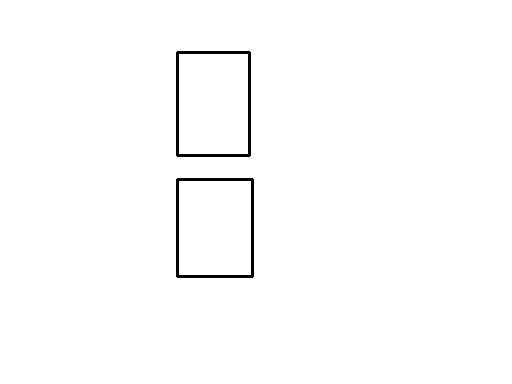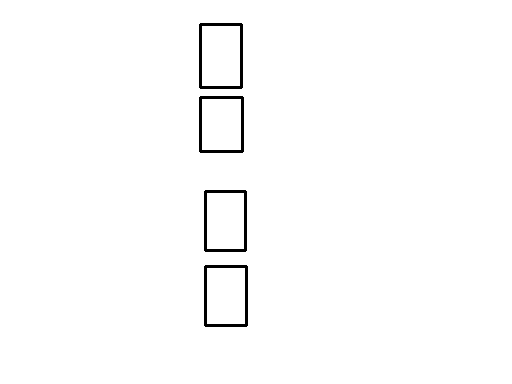WAR FOR BARAD'DUN
War for Barad'Dun is a Card Game using cards representing fighters of Barad'Dun, Weapons and Defences. You will need a deck of 40 Barad'Dun Fighter cards, a deck of 42 Weapon's cards and a deck of 44 Defence Cards. You should also have a copy of the Rules and at least one 6 sided die (1d6).
I have made set's of cards for 40 fighter's of Barad'Dun. Each has been given a general strength rating based on the fighter's demonstrated abilities in all aspects of our fighting game. In the upper left hand corner of each card is the fighter's battle name in red. In the upper right hand corner, in yellow, is the Fighter's strength, 2 being the least and 12 the maximum. At the bottom of each card is the Fighter's affiliation within the realm at the time of the making of this game.
The Weapons's deck consists of 42 cards representing a weapon commonly used in our fighting, its relative strength and in a few cases, a defence strength as well. In the upper left hand corner, in red, is the type of weapon shown. In the upper right hand corner, in yellow, is the weapon's strength. Some weapon classes have a negative number in blue beneath the strength number. This is its Defence strength if it has one. Weapon's represented are:
1. Dagger
2. Single edged sword.
3. Double edged Sword.
4. Florentine swords.
5. Axe.
6. Mace.
7. Flail.
8. Spear.
9. 'Red' represented by a Halberd.
10. Javelin.
11. Archery.
The Defence deck consists of 44 cards representing the various defences commonly available in our fighting. No strenght is given to defences. Defense cards only have a negative number representing the defence ability given to the fighter. In the upper left hand corner, in red, is the name of the defence. Most are shield types. In the upper right hand corner, in yellow, is a negative number for the defence given. The defence's represented are:
1. None.
2. Armor.
3. Helmet.
4. Buckler.
5. Round Shield.
6. Heater Shield.
7. Kite Shield.
8. Door Shield.
To Begin, first print out the card sets per the printing instructions on each card set. (some ask you to print more than one copy). Print out on stiff card stock, or purchase 3 sets of cheap playing cards and some glue sticks.
Cut the cards out. If using playing cards, glue the cards to the front portions and use clear packaging tape to 'laminate' them. Use different colors for the backs of each card type if possible, or use a thick marker and write "F" on the back of the Fighter cards, "W" on the back of the Weapons cards and "D" on the back of the Defence cards.
RULES OF PLAY
Shuffle each deck of cards and place in three seperate stacks to the side between the opposing players. Each player should have one six sided die.
Both players draw a fighter from the fighter deck and place it face up on the center of the table facing each other.

If one player draws the 'New fighter' Card. He may then draw another fighter card and place directly beside the New fighter card. This is the new fighter's 'Shadow'. It is the Shadow that will fight the battle. The new Figher is only a 1D6-3 modifier to the fight. (for the new fighter you must roll 1D6 and -3. The resule, either plus, 0 or a negative is added to the Shadow fighter's strength)
Next, draw one Weapon's card for each fighter. (No weapon's card is given to New Fighters, only their Shadows) Place this card behind the Fighter card.

The strength of the Weapon will be added to the Strength of the Fighter. Any Defence the weapon class has will be added to the Fighter's defence.
If a player Draws the "Javelin" card. He may draw a second Weapon's card and place it beside the Javelin card.
Next, draw one Defence card for each fighter (none for a New Fighter only his shadow) and place this card third in line behind the fighter.
Rules for Defence Cards:
1. If a fighter is Armed with Florentine Swords, a Spear, a Red or Archery, he may only use a 'Buckler', armor and/or Helmet. Any other Defence card can not be played and is thus discarded. The player can not draw another card if the first is discarded.(create a discard pile for such)
2. If the player draws an 'Armor' or 'Helmet' card, he may draw a second Defence card and place it beside this card, if the defence is playable. Example, a Florentine fighter can keep an Armor card, and a buckler, but if he draws a round shield, he must discard, etc.
3. If the player draws both an 'Armor' and a 'Helmet' card, he may draw a third defence card and play it if it is playable or discard as in #2.
4. All defence points for defence cards and weapon's cards with defence strengths, are cumulative and are a negative modifier that affects the Die roll of the opponant.
Once all Cards are drawn, both players add their fighter and weapon strengths. This is their total strength. The resulting strenght is then converted into a 1D6 roll plus modifiers. Examples:
1. A strength of 6 equals a straight 1D6 roll.
2. A strength of less 4 equals a 1D6 with a -2 modifier to the roll.
NOTE: Die rolls that are modified below 1, are treated as 1.
3. A strength of 10 equals a 1D6 with a +4 modifier.
4. Anything over 6 is a + modifier, anything under is a - modifier to the 1D6 roll.
ROLL THE DIE!
Each player rolls 1D6 and adds or subtracts strenght modifiers. He player now subtracts his defence strenght (a negative number from defence) to his opponants die roll.
The higher die roll wins the fight if it beats its opponant by 2 points. The winning player takes his fighter card, and the loosing fighter card, and puts it in his winning fighter stack. All weapon's and Defence cards that were in play are removed to the discard pile. No cards can be played again.
If the higher die roll wins by only 1 point. The winning fighter has only 'Gimped' his opponant. Re-roll the dice, with all the same modifiers. If the same player win's again, even by 1 point, he wins the fight. A fighter can only be gimped once.
If, after calculating the strenght points of both fighters, and taking into account the defence modifiers, there is no way for one fighter to win, then no die roll is neccessary, the loosing fighter "Yields". The winning fighter takes the two fighters to his winning stack, and all weapon's and defence cards are discarded.
Begin again with each player drawing a new fighter card, etc, etc.
Play continues until all fighter cards have been played. Once there are no more fighter cards to be played. Each player counts his winning fighter stack. The player with the most fighter cards, wins. A tie is a draw.
Reshuffle and play again!
More than one player can play, but it has to be in even teams. Example, three players can not play, but four can with two teams of two. In this case draw your fighter cards and lay them out as 'Shield wall'.

Place card from left to right; however, player's may place their against different opponants each round. For instance f may oppose a this round, and then choose to place his fighter to oppose b or c on the next round, etc. Once placed; however, the player can not switch the fighter around.
Winning fighters for each team are pooled into the team win stack and the winning team is the one with the most fighters in their winning stack at the end of the game.
I have playtested this game with my family and we have enjoyed it. I hope you do as well. Now on to WAR!
Konradr Greywolf of Barad'Dun
1-14-2011
Cards will be posted as .jpg images. These are reduce in half from the original bmp images that have been made to fit on a 8 1/2 by 11 lettersized page. When copying the image to a print program, you will need to make it fit the page before printing.
